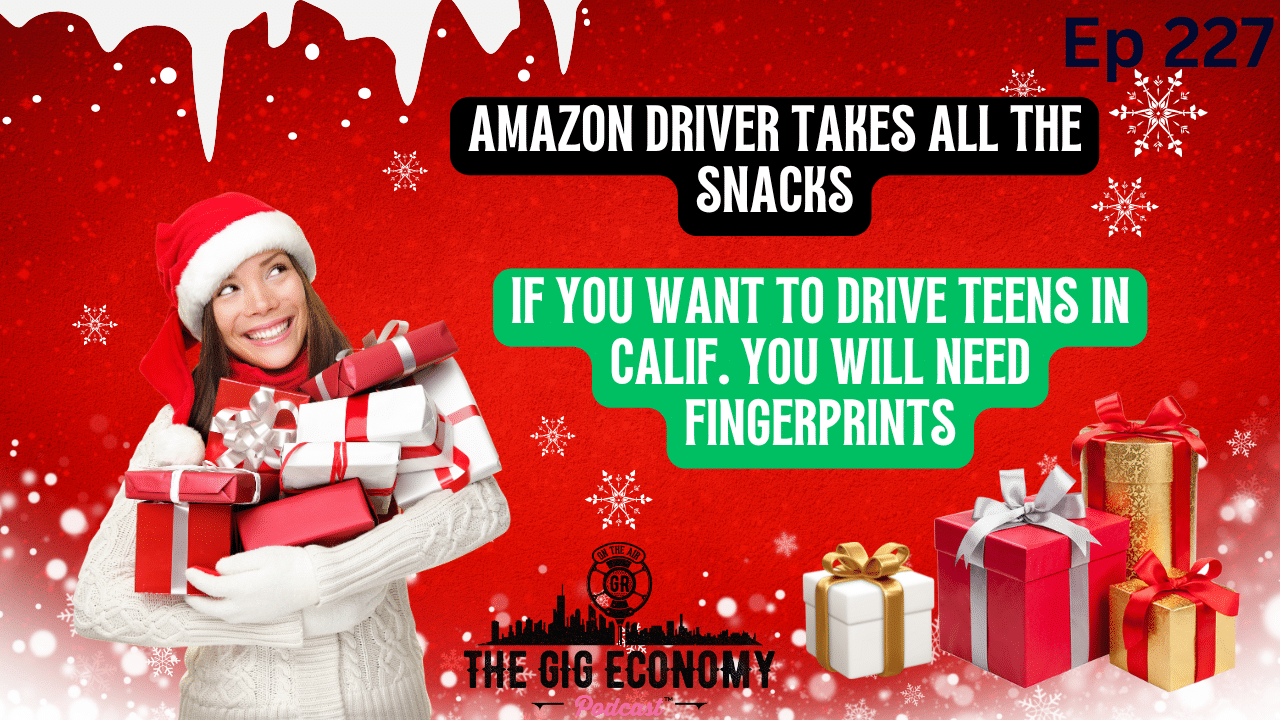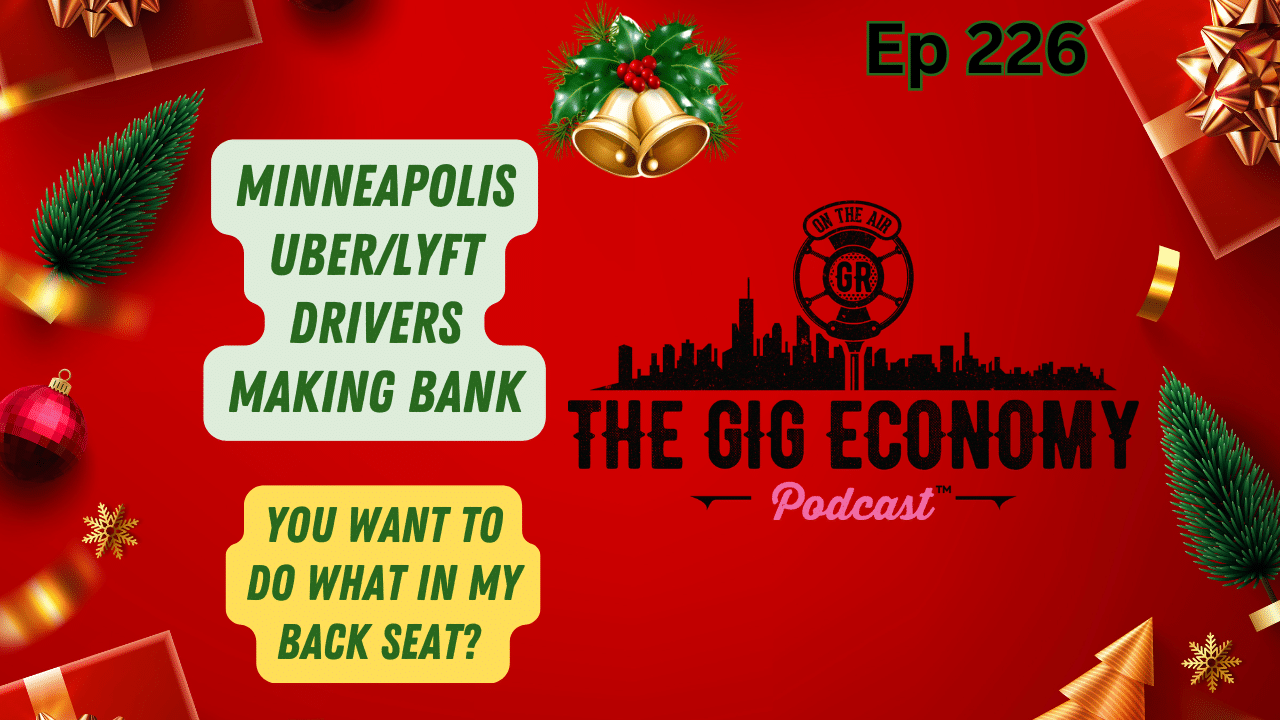
by Jason Tieri | Jan 18, 2025 | Podcasts
Everything Gig Economy Podcast Related: https://gigeconomyshow.com/
Download the Audio Podcast: https://thegigeconomypodcast.buzzsprout.com
Love the show? You now have the opportunity to support the show with some great rewards by becoming a Patron. Tier #2 we offer free merch, an Extra in-depth podcast per month, and an NSFW pre-show https://www.patreon.com/thegigeconpodcast
Do you want to pee in something fancy when you can’t find a bathroom?
Introducing the Thirsty Goose: thirstygoose.co/THEGIGECONOMYPODCAST
Use the code: THEGIGECONOMYPODCAST for 10% off
A mobile vending machine in your car and way better than cargo! https://ridy.club/presale/order?ref_code=3db5
Octopus is a mobile entertainment tablet for your riders. Earn 100.00 per month for having the tablet in your car! No cost for the driver!
https://playoctopus.page.link/HD2FBKJzFqRR35YE9
Want to earn more and stay safe? Download Maxymo https://middletontech.com/gigeconomypodcast
Community Facebook Group: https://www.facebook.com/groups/451789943399295/
The Gig Economy Podcast Group Download Telegram 1st, then click on the link to join. https://t.me/joinchat/R42wUR2QGhCi2gBD
TikTok: https://www.tiktok.com/@gigeconomypodcast?
Subscribe on Youtube https://www.youtube.com/channel/UCK_bV7j7o1BzWtB4mt_4R8Q?view_as=subscriber
Follow us on Twitter https://twitter.com/gigeconpodcast
The camera we recommend: Vantrue N2 Pro http://amzn.to/2tYAPWM
This podcast is produced by Hey Guys Media Group LLC http://www.heyguysmediagroup.com
Want to start your own podcast? Reach out to them today!
At The Gig Economy Podcast, our mission is to guide you toward the best strategies to amplify your income in the gig economy. For more top tips and industry knowledge, visit our website, tune into our podcast, or stay connected with our newsletter. Here’s to your successful journey on the road!

by Jason Tieri | Jan 18, 2025 | Podcasts
Everything Gig Economy Podcast Related: https://gigeconomyshow.com/
Download the Audio Podcast: https://thegigeconomypodcast.buzzsprout.com
Love the show? You now have the opportunity to support the show with some great rewards by becoming a Patron. Tier #2 we offer free merch, an Extra in-depth podcast per month, and an NSFW pre-show https://www.patreon.com/thegigeconpodcast
Do you want to pee in something fancy when you can’t find a bathroom?
Introducing the Thirsty Goose: thirstygoose.co/THEGIGECONOMYPODCAST
Use the code: THEGIGECONOMYPODCAST for 10% off
A mobile vending machine in your car and way better than cargo! https://ridy.club/presale/order?ref_code=3db5
Octopus is a mobile entertainment tablet for your riders. Earn 100.00 per month for having the tablet in your car! No cost for the driver!
https://playoctopus.page.link/HD2FBKJzFqRR35YE9
Want to earn more and stay safe? Download Maxymo https://middletontech.com/gigeconomypodcast
Community Facebook Group: https://www.facebook.com/groups/451789943399295/
The Gig Economy Podcast Group Download Telegram 1st, then click on the link to join. https://t.me/joinchat/R42wUR2QGhCi2gBD
TikTok: https://www.tiktok.com/@gigeconomypodcast?
Subscribe on Youtube https://www.youtube.com/channel/UCK_bV7j7o1BzWtB4mt_4R8Q?view_as=subscriber
Follow us on Twitter https://twitter.com/gigeconpodcast
The camera we recommend: Vantrue N2 Pro http://amzn.to/2tYAPWM
This podcast is produced by Hey Guys Media Group LLC http://www.heyguysmediagroup.com
Want to start your own podcast? Reach out to them today!
At The Gig Economy Podcast, our mission is to guide you toward the best strategies to amplify your income in the gig economy. For more top tips and industry knowledge, visit our website, tune into our podcast, or stay connected with our newsletter. Here’s to your successful journey on the road!

by Jason Tieri | Jan 18, 2025 | Podcasts
Everything Gig Economy Podcast Related: https://gigeconomyshow.com/
Download the Audio Podcast: https://thegigeconomypodcast.buzzsprout.com
Love the show? You now have the opportunity to support the show with some great rewards by becoming a Patron. Tier #2 we offer free merch, an Extra in-depth podcast per month, and an NSFW pre-show https://www.patreon.com/thegigeconpodcast
Do you want to pee in something fancy when you can’t find a bathroom?
Introducing the Thirsty Goose: thirstygoose.co/THEGIGECONOMYPODCAST
Use the code: THEGIGECONOMYPODCAST for 10% off
A mobile vending machine in your car and way better than cargo! https://ridy.club/presale/order?ref_code=3db5
Octopus is a mobile entertainment tablet for your riders. Earn 100.00 per month for having the tablet in your car! No cost for the driver!
https://playoctopus.page.link/HD2FBKJzFqRR35YE9
Want to earn more and stay safe? Download Maxymo https://middletontech.com/gigeconomypodcast
Community Facebook Group: https://www.facebook.com/groups/451789943399295/
The Gig Economy Podcast Group Download Telegram 1st, then click on the link to join. https://t.me/joinchat/R42wUR2QGhCi2gBD
TikTok: https://www.tiktok.com/@gigeconomypodcast?
Subscribe on Youtube https://www.youtube.com/channel/UCK_bV7j7o1BzWtB4mt_4R8Q?view_as=subscriber
Follow us on Twitter https://twitter.com/gigeconpodcast
The camera we recommend: Vantrue N2 Pro http://amzn.to/2tYAPWM
This podcast is produced by Hey Guys Media Group LLC http://www.heyguysmediagroup.com
Want to start your own podcast? Reach out to them today!
At The Gig Economy Podcast, our mission is to guide you toward the best strategies to amplify your income in the gig economy. For more top tips and industry knowledge, visit our website, tune into our podcast, or stay connected with our newsletter. Here’s to your successful journey on the road!
by Jason Tieri | Jan 18, 2025 | Podcasts
Everything Gig Economy Podcast Related: https://gigeconomyshow.com/
Download the Audio Podcast: https://thegigeconomypodcast.buzzsprout.com
Love the show? You now have the opportunity to support the show with some great rewards by becoming a Patron. Tier #2 we offer free merch, an Extra in-depth podcast per month, and an NSFW pre-show https://www.patreon.com/thegigeconpodcast
Do you want to pee in something fancy when you can’t find a bathroom?
Introducing the Thirsty Goose: thirstygoose.co/THEGIGECONOMYPODCAST
Use the code: THEGIGECONOMYPODCAST for 10% off
A mobile vending machine in your car and way better than cargo! https://ridy.club/presale/order?ref_code=3db5
Octopus is a mobile entertainment tablet for your riders. Earn 100.00 per month for having the tablet in your car! No cost for the driver!
https://playoctopus.page.link/HD2FBKJzFqRR35YE9
Want to earn more and stay safe? Download Maxymo https://middletontech.com/gigeconomypodcast
Community Facebook Group: https://www.facebook.com/groups/451789943399295/
The Gig Economy Podcast Group Download Telegram 1st, then click on the link to join. https://t.me/joinchat/R42wUR2QGhCi2gBD
TikTok: https://www.tiktok.com/@gigeconomypodcast?
Subscribe on Youtube https://www.youtube.com/channel/UCK_bV7j7o1BzWtB4mt_4R8Q?view_as=subscriber
Follow us on Twitter https://twitter.com/gigeconpodcast
The camera we recommend: Vantrue N2 Pro http://amzn.to/2tYAPWM
This podcast is produced by Hey Guys Media Group LLC http://www.heyguysmediagroup.com
Want to start your own podcast? Reach out to them today!
At The Gig Economy Podcast, our mission is to guide you toward the best strategies to amplify your income in the gig economy. For more top tips and industry knowledge, visit our website, tune into our podcast, or stay connected with our newsletter. Here’s to your successful journey on the road!

by Jason Tieri | Jan 18, 2025 | Podcasts
Everything Gig Economy Podcast Related: https://gigeconomyshow.com/
Download the Audio Podcast: https://thegigeconomypodcast.buzzsprout.com
Love the show? You now have the opportunity to support the show with some great rewards by becoming a Patron. Tier #2 we offer free merch, an Extra in-depth podcast per month, and an NSFW pre-show https://www.patreon.com/thegigeconpodcast
Do you want to pee in something fancy when you can’t find a bathroom?
Introducing the Thisty Goose: thirstygoose.co/THEGIGECONOMYPODCAST
Use the code: THEGIGECONOMYPODCAST for 10% off
A mobile vending machine in your car and way better than cargo! https://ridy.club/presale/order?ref_code=3db5
Octopus is a mobile entertainment tablet for your riders. Earn 100.00 per month for having the tablet in your car! No cost for the driver!
https://playoctopus.page.link/HD2FBKJzFqRR35YE9
Want to earn more and stay safe? Download Maxymo https://middletontech.com/gigeconomypodcast
Community Facebook Group: https://www.facebook.com/groups/451789943399295/
The Gig Economy Podcast Group Download Telegram 1st, then click on the link to join. https://t.me/joinchat/R42wUR2QGhCi2gBD
TikTok: https://www.tiktok.com/@gigeconomypodcast?
Subscribe on Youtube https://www.youtube.com/channel/UCK_bV7j7o1BzWtB4mt_4R8Q?view_as=subscriber
Follow us on Twitter https://twitter.com/gigeconpodcast
The camera we recommend: Vantrue N2 Pro http://amzn.to/2tYAPWM
This podcast is produced by Hey Guys Media Group LLC http://www.heyguysmediagroup.com
Want to start your own podcast? Reach out to them today!




